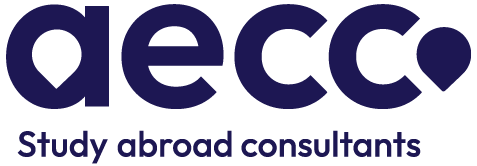AECC's Insights for your study abroad journey
Prospective students have a long list of considerations when applying to universities overseas. Studying for language proficiency examinations, notably, the Test of English as a Foreign Language (TOEFL), might be the most stressful part of applying to universities. When discussing the TOEFL curriculum, it is only possible to mention the TOEFL Speaking pattern component, which is notoriously tricky compared to the other test parts. It consists of roughly four activities where applicants must record their voices on various TOEFL-specific speaking subjects. If you're getting ready to take the TOEFL exam and want to do well on the speaking part, this blog will provide you with everything included within the TOEFL speaking section in detail!
Leading Education Consultants that has assisted 55000+ students this year!
4.8
Contact AECC today!
TOEFL Speaking Pattern - Highlights
Purpose of TOEFL Speaking
TOEFL Speaking Format
The following is a summary of the structure of the TOEFL Speaking section:
- There are six activities: two forms of independent Speaking and four forms of integrated Speaking.
- Participants in the Independent Speaking section are asked to share their thoughts on a subject they know well or to summarise material presented in a reading passage or a lecture.
- Responding to an "Integrated Speaking" assignment requires using information obtained from the exam's listening and reading portions.
- Examinees are asked to provide their thoughts on a particular subject in Task 1 and to describe a book or a lecture in Task 2.
- Test-takers listen to a shorter lecture or chat and then answer questions about Task 3; in Task 4, they do the same thing but with a longer one.
- Examinees read a paragraph and answer questions about it in Task 5; they look at a graph or chart and answer questions about it in Task 6.
- Participants are allowed 15–30 seconds to think about their answers and 45–60 seconds to provide their solutions on the exam.
- The time allotted for the Speaking portion is about 20 minutes.
- Each activity is scored between 0 and 30, and the total Speaking score is the mean of the six subscores.
What are the types of Questions in the TOEFL Speaking section?
- Do you believe it's best to study alone or in groups when preparing for an exam? Use justifications and specifics in your explanation.
- While there are also some open-ended queries, please describe your ideal home. Use justifications and specifics in your explanation.
- Fifteen seconds will be allotted for preparation, followed by 45 seconds for the response.
- One speaker will have a strong opinion on the subject at hand. You are expected to provide justifications and corroborating details for your position. This query allows 30 seconds for preparation and 60 seconds for the response.
- This query frequently feels more challenging because the subject matter is much denser. Further, science-related topics often take a lot of work to summarise in a brief period.
- One must summarise the lecture while emphasising a particular process or emphasis on a query.
- This query type provides you 20 seconds to compose your response and 60 seconds to communicate.
- It will be more complex than Question 3 because it necessitates one's opinion in response.
-
Students often need help following lecture material when they have only 20 seconds to prepare and 60 seconds to respond.
-
An effective response for Question #6 will focus on the main ideas, avoiding lengthy explanations of intimidating vocabulary.
Tips to Get High Score in TOEFL Speaking Section
Recognise These Four Varieties of Questions
There are four questions in TOEFL speaking pattern to choose from in the TOEFL oral examination. The format of the questions varies. Therefore, the first step is to comprehend each inquiry's requirements fully. Each question has a specific framework; knowing that structure will help you choose the best response.
Note down important information.
Second, while speaking on the TOEFL, write down the most important information you learn. You will have a paper to make notes on during the TOEFL test. Taking advantage of this chance is highly recommended and is particularly recommended when listening to the audio in Questions 2, 3, and 4.
Make a Plan to Attend Questions
Having a plan for how you will answer each question is good. In Question 1, for instance, you'll be asked to choose one of many possibilities and explain your reasoning. With a plan, you may get tongue-tied and save valuable time ruminating about what to say. Having a plan for how you will respond to each question on the test can help you do better.
Master Transitional Phrases
Make your answer seem more polished and professional in TOEFL Speaking by utilising transitional words to go from one thought to another. Phrases like "for example," "however," "when," and "another reason" in the above answer serves to organise and guide the audience toward the intended conclusion. You may do so with these transitions if you must pad your responses.
FAQs
Reading and Listening: The candidate will first read a piece and then listen to a lecture on the same subject in this examination section. The candidate will subsequently be asked to synthesise the lecture and reading material.
Listening: The examinee's listening comprehension will be tested by playing back a conversation or a lecture, followed by questions on what was heard.
Listening and Speaking: Tasks including listening to a lecture and then commenting on the presentation's content or answering questions about it will be included.
Speaking: Test takers will be presented with a subject and asked to share their thoughts on it, or an event they've had that relates to it in a spoken format.



